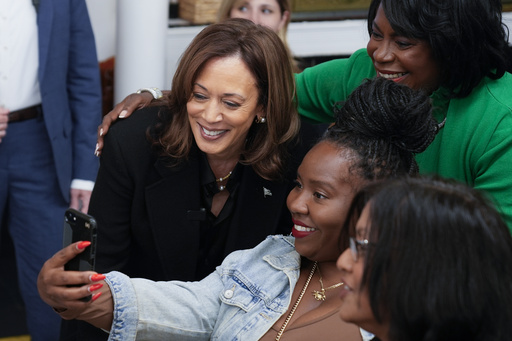
NEW YORK — As we enter the last full week of the 2024 presidential campaign, uncertainty looms large over a highly contested race between Democrat Kamala Harris and Republican Donald Trump. The upcoming days are expected to play a crucial role in determining the eventual victor.
One key issue to monitor is the potential impact of ongoing conflicts in the Middle East. Traditionally, foreign affairs do not greatly influence U.S. presidential elections, but the heightened military actions in the region coincide with millions of voters preparing to cast their ballots. The response from Iran to Israel’s recent airstrikes could significantly alter the course of the conflict and its repercussions on U.S. electoral dynamics.
For Harris, the challenge is delicate; she aims to express her unwavering support for Israel while also acknowledging the tragic loss of Palestinian lives due to Israel’s operations against Hamas since the October 7 attacks. This balancing act has led to mounting pressure from progressive factions within her party, who have voiced strong criticisms against Israel’s actions.
On the other hand, Trump remains staunchly pro-Israel, although he has garnered some support from Arab American leaders in key states like Michigan. Regardless of the outcome, the next president will confront one of the most intricate foreign policy challenges in decades.
Democratic anxiety is palpable as Election Day draws near, but Harris’ team made a conscious effort over the weekend to convey a message of optimism. Senior adviser Jenn O’Malley Dillon expressed confidence, stating on MSNBC that they believe victory is within reach and that the campaign is positioned favorably for the close race ahead.
Harris plans to outline her final arguments on Tuesday, speaking at the Ellipse, the site where Trump delivered remarks ahead of the Capitol attack in January 2021. In her address, she is expected to emphasize the dangers Trump represents to U.S. democracy, labeling him as “a fascist.” Notably, she has gained unexpected backing from Trump’s former chief of staff, John Kelly, who shares similar sentiments regarding Trump.
The focus of her speech will extend beyond demonizing Trump; she’ll urge voters to envision who will occupy the Oval Office during this critical period. She aims to stress the stakes of the November 5 election for undecided constituents, particularly moderate Republicans who might be disillusioned by Trump’s polarizing leadership style. However, some progressive Democrats worry that her campaign is not concentrated enough on economic matters as they approach the election’s conclusion.
Meanwhile, Trump’s campaign faces the risk of being derailed by controversy as they attempt to maintain a steady message. A rally at Madison Square Garden was overshadowed by offensive remarks, demonstrating the precariousness of his messaging. History suggests that Trump is likely to create fresh controversies as the election nears, leaving the question of whether these incidents could potentially disrupt voter perceptions.
Reports indicate that Trump has adopted authoritarian rhetoric, almost labeling Democrats as a greater threat to national security than traditional adversaries like Russia and China. Democrats are likely to scrutinize Trump’s public engagements, hoping to capitalize on any missteps or provocative statements he may make leading up to the election.
The travel itineraries of both candidates will provide insight into which battlegrounds hold the most significance for Election Day. Currently, both Trump and Harris are actively campaigning in seven key swing states: Michigan, Pennsylvania, Wisconsin, Arizona, Georgia, Nevada, and North Carolina. Harris dedicated time to Pennsylvania, seen as a crucial battleground, and has plans to visit several states in rapid succession.
In contrast, Trump’s schedule includes daily rallies across the week, offering a glimpse into the campaign’s electoral strategy. However, adjustments to their plans may occur based on real-time campaign intelligence.
Additionally, more than 41 million votes have already been cast across the country. Historically, Democrats have performed well in early voting, but Republicans are showing increased engagement this election cycle. The sustainability of this trend remains an open question, especially as Trump has shifted his stance on early voting, previously advocating for in-person voting only.
Lastly, a critical concern is Trump’s repeated assertions of a rigged election, a narrative lacking evidence. As Election Day approaches, Trump’s claims could exacerbate tensions and lead to further polarization as both parties prepare for possible legal disputes, regardless of the election’s outcome. The Republican National Committee has committed significant resources to ensure election oversight, raising worries among Democrats about potential intimidation at polling places and the overall integrity of the election.
